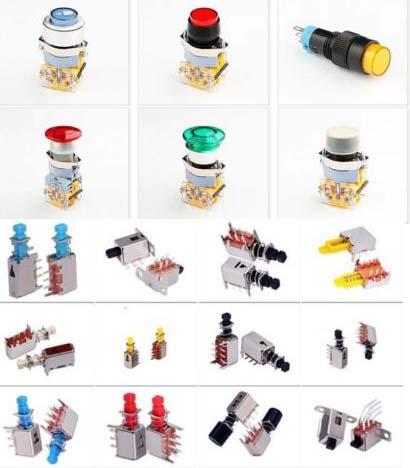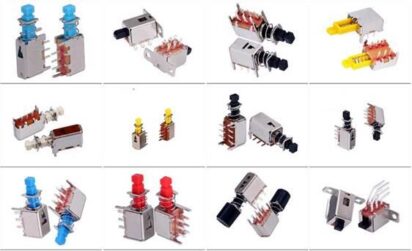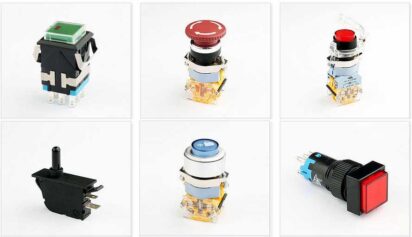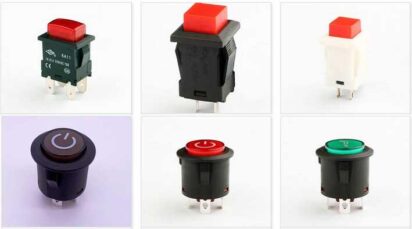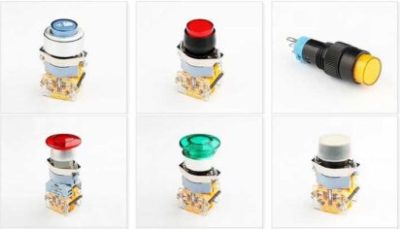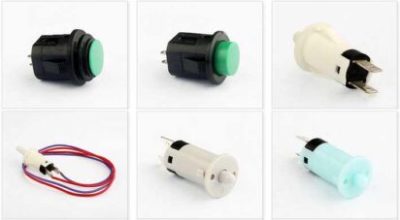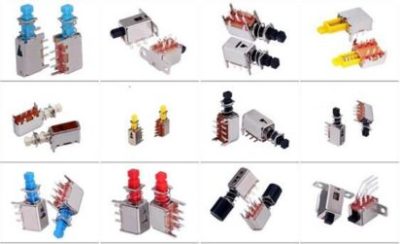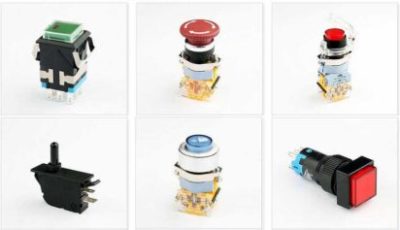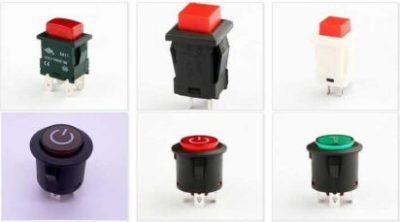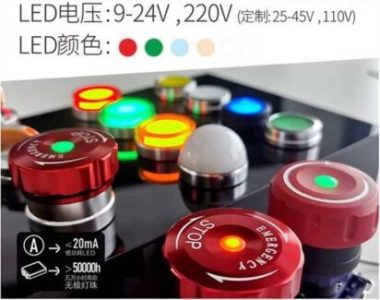How Button switches work
The operating force of the Button switch is related to the state of the metal reed. The starting force is proportional to the distance the metal reed is compressed. When the metal reed is compressed to 5% to 70%, the operating force suddenly decreases, accompanied by a “tick” sound. Rubber switches generally have two structures. The operating force curve varies greatly with the geometry of the rubber block.
Relative humidity: <95%
Rated voltage: 12V
Rated current: 50mA
Temperature: -25~70℃
The purpose of the Button switch
The main uses of Button switches are: color TVs, black and white TVs, audio equipment, video recorders, cameras, máy tính, game consoles, fax machines, walkie-talkies, batons, machine tool control devices, copying, printers, electronic instruments, meters and other household appliances .
Structural principle of push button switch
There are many types of push button switches. It can be divided into ordinary button type, mushroom head type, self-locking type, self-resetting type, rotary handle type, indicator light type, light symbol type and key type, vân vân. There are single button, double button, three buttons and different combinations. Nói chung là, it adopts a water-retaining structure, which is composed of a button cap, a return spring, a static contact, a moving contact and a casing. It is usually made into a composite type, with a pair of normally closed contacts and normally open contacts. Some products can increase the number of contact pairs by connecting multiple components in series. There is also a self-holding button that automatically holds the closed position after being pressed, and can only be opened when the power is turned off.
When the button is not pressed, the moving contact is connected to the static contact above, and this pair of contacts is called a normally closed contact. At this time, the moving contact is disconnected from the static contact below. This pair of contacts is called a normally open contact: when the button is pressed, the normally closed contact opens and the normally open contact closes. Release the button to restore the original working state under the action of the return spring.
Types of Push Button Switches
(1) Protected button: a button switch with a protective shell that can prevent the internal button parts from being mechanically damaged or prevent people from touching live parts. Its code name is H.
(2) Dynamic break button: Under normal conditions, the switch contact is a push button switch that is turned on.
(3) Close button: Under normal conditions, the switch contact is a kind of button switch that is disconnected.
(4) Moving-on and moving-off buttons: Under normal conditions, the switch contacts are both on and off.
(5) Illuminated button switch: There is a signal light inside the button, which is not only used to issue operation commands + but also serves as a signal indicator, and its code is D.
(6) Action click button: that is, click the button switch with the mouse.
(7) Explosion-proof button: a button switch that can be used in places containing explosive gas and dust without causing explosion, and its code is B.
(8) Anti-corrosion push button switch: It can prevent the intrusion of chemical corrosive gases, and its code is F.
(9) Waterproof push button switch: with a sealed shell to prevent the intrusion of rainwater, its code is S.
(10) Emergency button: There is a big red mushroom button protruding outside, which can be used as a button switch for cutting off the power in an emergency, and its code is J or M.
(11) Open button: a button switch that can be used to be embedded and fixed on the panel of the switch board, control cabinet or console, and its code is K.
(12) Interlocking button: a button switch with multiple contacts interlocking, its code is C.
(13) Knob button: Rotate the handle to operate the contact. There are two positions of on and off, generally a button switch of the panel mounting type, and its code name is X.
(14) Key-type button: a button switch that is operated by inserting and rotating a key, which can prevent misoperation or be operated by a special person, and its code is Y.
(15) Self-holding button: a button with a self-holding electromagnetic mechanism inside the button switch, its code name is z.
(16) Combined button: A button switch with a combination of multiple buttons. Its code name is E.
 English
English العربية
العربية Български
Български 中文(漢字)
中文(漢字) Čeština
Čeština Dansk
Dansk Eesti keel
Eesti keel Suomi
Suomi Français
Français Deutsch
Deutsch Ελληνικά
Ελληνικά עברית
עברית Magyar
Magyar Bahasa Indonesia
Bahasa Indonesia Italiano
Italiano 日本語
日本語 한국어
한국어 Latīna
Latīna Latviešu valoda
Latviešu valoda Lëtzebuergesch
Lëtzebuergesch Polski
Polski Português
Português Română
Română Русский
Русский Slovenščina
Slovenščina Español
Español Svenska
Svenska ภาษาไทย
ภาษาไทย Tiếng Việt
Tiếng Việt
